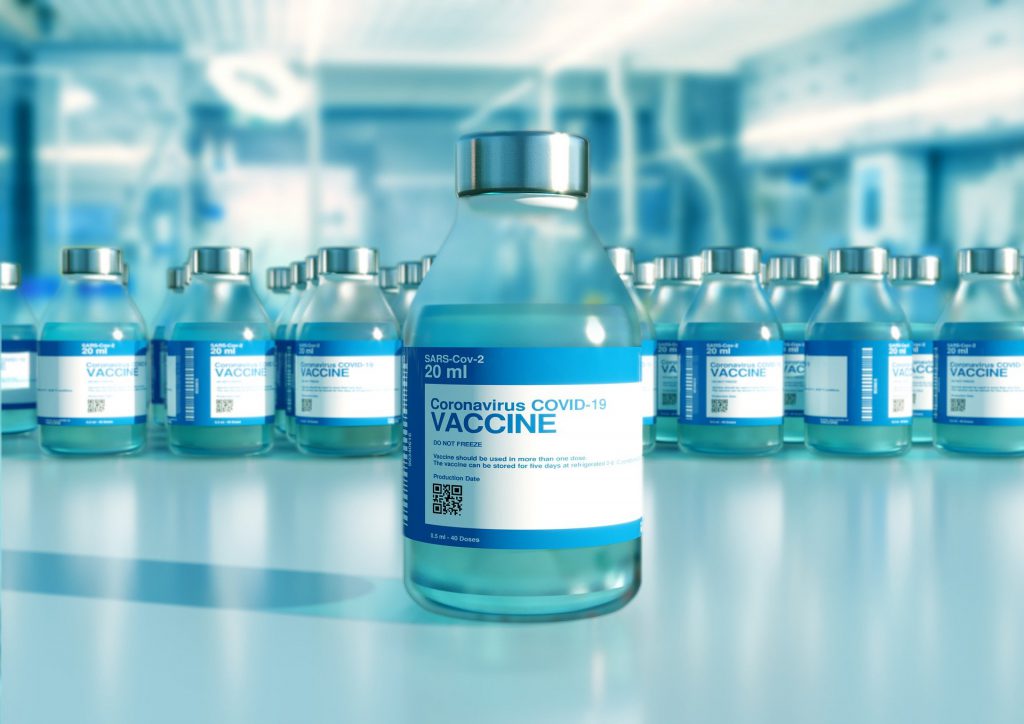3% of State Residents Fully Vaccinated
More than 793,000 doses administered, and pace will increase as supplies to Wisconsin increasing.
The percentage of Wisconsinites that have received both doses of the COVID-19 vaccine is now at three percent.
Vaccine production is slowly increasing and this has led the federal government to increase the size of allocations to states, Julie Willems Van Dijk, deputy secretary for the Department of Health Services said at a briefing Tuesday. The number of doses being distributed to states per week was recently bumped from 10 million to 10.5 million.
In total, the state has been allocated 1.2 million doses since vaccinations began, and 901,500 doses have been ordered by the state’s vaccinators.
As of Tuesday, more than 793,000 doses have been administered, and more than 174,000 state residents have completed the two-dose vaccination process.
The Federal Retail Pharmacy Program for COVID-19 Vaccination begins on Thursday. Under this program the federal government is shipping vaccine directly to retail pharmacies, like Walgreens, to increase access to the vaccine. Anyone currently eligible will be able to contact their local pharmacy for potential vaccination.
Willems Van Dijk said the federal program will add an additional 18,000 doses to the supply entering the state each week. The common refrain from officials at every level of government has been that the single biggest obstacle to increasing vaccine is supply.
During a press briefing Tuesday, Governor Tony Evers said, “It’s what we’ve said all along, get Wisconsin the supply and we will get shots in the arm.”
As of Tuesday, the number of vaccines given to state residents 65 or older was more than 311,000, meaning about 45% of estimated 700,000 people in the state in that age group have gotten at least one dose. It is estimated that the population in the next stage of vaccination, phase 1b, is roughly the same size, Willems Van Dijk said.
Marlaina Jackson, interim Health Commissioner for the City of Milwaukee, said the health department would likely vaccinate nearly 5,800 individuals this week. That figure included people receiving both first and second doses of the vaccine.
The city is finalizing the dates and locations for its mobile vaccination units, and will announce those in the coming week, Jackson said. The mobile vaccination effort is the city’s attempt to expand vaccine access and make the administration of doses more equitable.
Johnson & Johnson Vaccine
State and local public health officials are hoping that vaccine availability will increase even more in the coming weeks, now that Johnson & Johnson has submitted a potential vaccine to the federal Food and Drug Administration for emergency use like the Pfizer/Biotech and Moderna vaccines.
The term efficacy means the “proportionate reduction in disease among the vaccinated groups,” according to the CDC. So, an efficacy of 72% means that with two identical groups — one given the vaccine, the other a placebo — the group that received the vaccine will have 72% fewer cases of COVID-19 than the group that didn’t receive the vaccine.
However, as with the vaccines currently in use, preventing the disease is not the only metric of success for the vaccine. Because, despite the 72% efficacy, the Johnson & Johnson vaccine was shown to be 85% effective in preventing severe cases of COVID-19, and it was 100% effective in preventing hospitalizations and death due to COVID-19.
The first review of the emergency use application for the vaccine has been scheduled for February 26th.
If you think stories like this are important, become a member of Urban Milwaukee and help support real, independent journalism. Plus you get some cool added benefits.
More about the Coronavirus Pandemic
- Governors Tony Evers, JB Pritzker, Tim Walz, and Gretchen Whitmer Issue a Joint Statement Concerning Reports that Donald Trump Gave Russian Dictator Putin American COVID-19 Supplies - Gov. Tony Evers - Oct 11th, 2024
- MHD Release: Milwaukee Health Department Launches COVID-19 Wastewater Testing Dashboard - City of Milwaukee Health Department - Jan 23rd, 2024
- Milwaukee County Announces New Policies Related to COVID-19 Pandemic - David Crowley - May 9th, 2023
- DHS Details End of Emergency COVID-19 Response - Wisconsin Department of Health Services - Apr 26th, 2023
- Milwaukee Health Department Announces Upcoming Changes to COVID-19 Services - City of Milwaukee Health Department - Mar 17th, 2023
- Fitzgerald Applauds Passage of COVID-19 Origin Act - U.S. Rep. Scott Fitzgerald - Mar 10th, 2023
- DHS Expands Free COVID-19 Testing Program - Wisconsin Department of Health Services - Feb 10th, 2023
- MKE County: COVID-19 Hospitalizations Rising - Graham Kilmer - Jan 16th, 2023
- Not Enough Getting Bivalent Booster Shots, State Health Officials Warn - Gaby Vinick - Dec 26th, 2022
- Nearly All Wisconsinites Age 6 Months and Older Now Eligible for Updated COVID-19 Vaccine - Wisconsin Department of Health Services - Dec 15th, 2022
Read more about Coronavirus Pandemic here





















